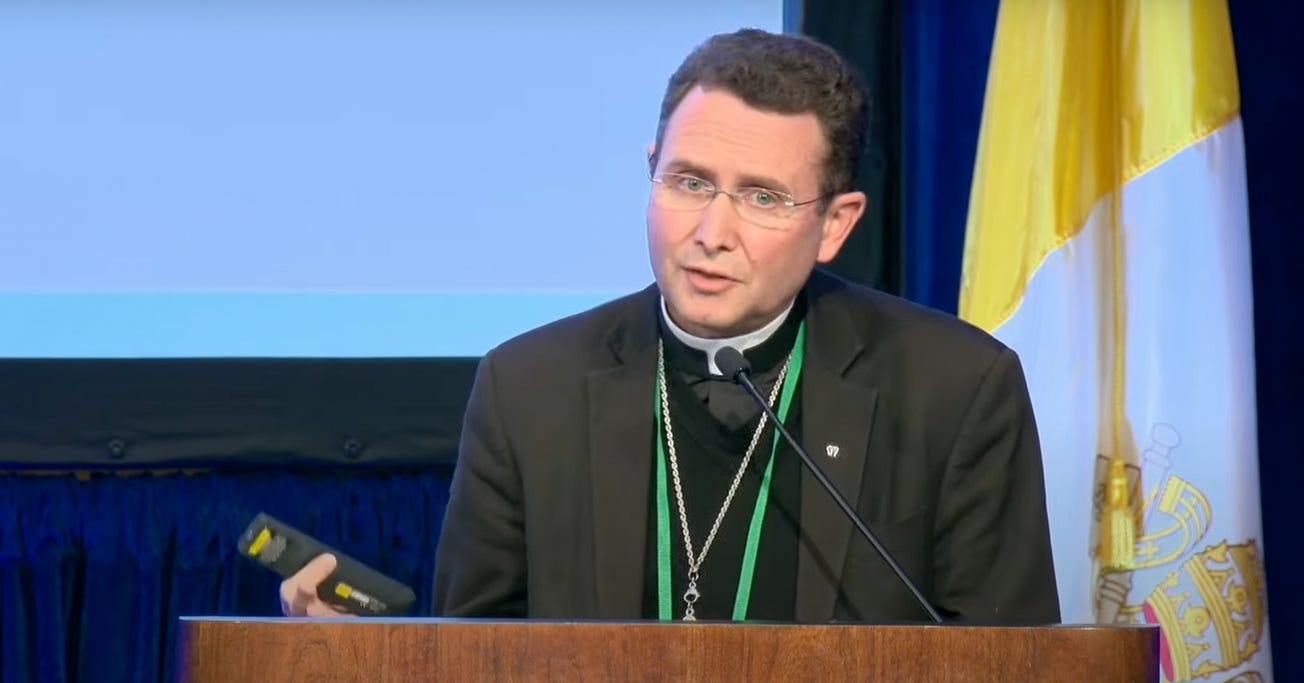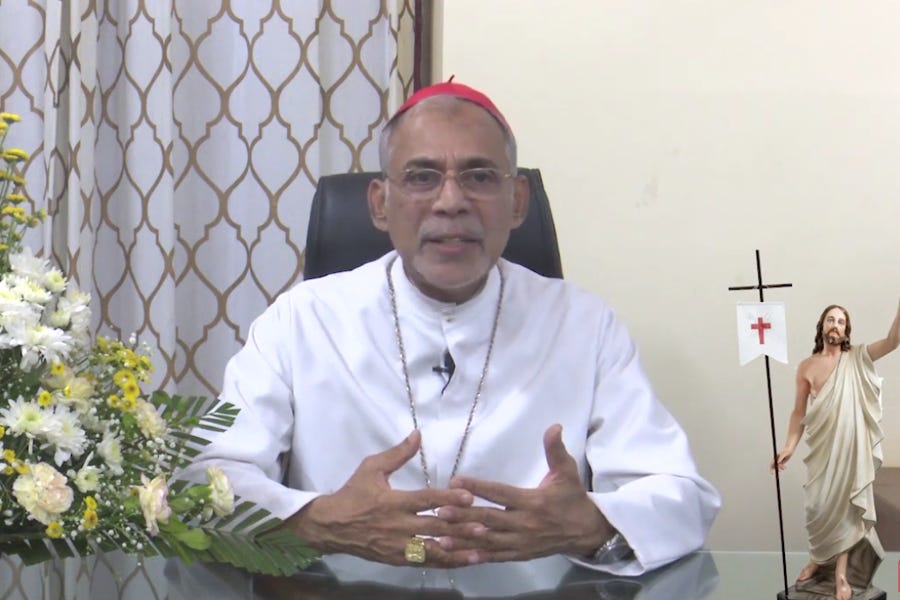The future of Catholic schools is one of the most discussed issues in the Church in the United States. Over the course of the coronavirus pandemic, many schools have seen enrollment rates drop, while the number of families choosing to homeschool their children has risen.
There is no shortage of debate about different kinds of funding models for Catholic schools, or about the kind of curriculum best suited to helping foster the faith.
This week, The Pillar’s Charlie Camosy talked with the leader of a school which has adopted a “classical” curriculum, centered on great books, Latin, poetry and traditional ways of teaching math.
Tommy Curtin has served as headmaster at Our Lady of the Rosary School in Greenville, SC, since 2017. When he took over, OLR was an elementary school with an uncertain future. Three years ago, he made the decision to “go classical” and expand the school through grade 12. Curtin says it’s been a roaring success — enrollment is up, and families are moving to the area just to send their kids to the school.
Camosy: You've built something extraordinary in Greenville, South Carolina. Can you say a little bit about the school, its story, and how this came to be?
When I started as headmaster of Our Lady if the Rosary five years ago, the school was what many modern Catholic elementary schools are: academically adequate, not unorthodox, and meticulously compliant with diocesan regulations. With that characterization, I do not mean to disparage the work of those who preceded me. But the pastor, Fr. Dwight Longenecker, envisioned a more intentional, more comprehensive form of Catholic education.
Three years ago, we adopted a new classical mission and overhauled the curriculum. Latin, great books, memory work, poetry, traditional math, and beautiful cursive became the priority. Technology use was deemphasized. The Catholic faith became integrated with all aspects of school life.
At the same time that OLR “went classical” we also added a high school division. On this front, the diocese took some convincing. We were hardly bursting with students, so everyone wanted to know why we thought our little parochial school was the right candidate for vertical expansion. To our bishop’s credit, he greenlit the project anyway, and this year we will graduate our first class of seniors.
So, now Our Lady of the Rosary is a K-12 classical academy. Since making the change, enrollment has grown from 135 to 220 students with a projection of over 260 by next fall. Just a few years ago, the talk was whether OLR had a future or whether it would be prudent to close up shop like so many parish schools. Now the main question is how we will accommodate all the families hoping to join us. Maybe we need to build a bigger school!
That's really extraordinary. Other than God's grace, which is clearly at work here, to what do you attribute this success? In my recent visit to Greenville, I got a sense of the robust support of the Catholic community, and that must play a role.
The success of the classical schools movement is well-documented. We knew there would be families who saw value in a Catholic education focused on developing wisdom and virtue, not merely pre-college skills. But it’s so much more than that.
The pandemic has disclosed previously hidden cultural divisions among American states and cities. It turned out that parents didn’t just desire classical Catholic education for their children; they were prepared to move across the country for it.
Recognizing this phenomenon, OLR prayed a novena in April 2020, that Catholic families seeking such a community would somehow find us in Greenville, SC. Almost immediately inquiries flooded in from Oregon to Minnesota to New York. These families were not simply seeking a school. They sought a Catholic culture in which their children could grow and thrive. We have been privileged to receive them.
Culture is everything — it is the hidden curriculum of a school that either complements or contends with the written curriculum. By recruiting joyful, devout Catholic families from across the country, we were not simply stabilizing OLR’s enrollment, we were enhancing the educational environment of the school. The peer and parent culture now match the instruction delivered in the classroom. As with the parable of the Sower and the Seed, we finally have the good soil that allows the truth of the Gospel to take root in students and blossom without being choked off by weeds.
More broadly, how would you describe this moment for education in the United States?
In a sense, there have never been greater opportunities for learning, whether through the reading of books, online courses, or YouTube videos. If education were merely a function of access to information, we would be living in the golden age. Alas, we are not.
The United States school systems – public, private, even parochial – have not produced a properly educated society. Intuitively, we know that, whatever it is the students have been learning, it hasn’t worked. Among myriad problems, the foremost is that most educators lack a true understanding of the nature, the essence, of their students. These teachers, almost uniformly trained in secular university classrooms, are brimming with “best practices.” Yet, a Christian anthropology is sorely lacking.
At the deepest level, they don’t know who their students are. No one on their path to a teaching license informed them that their students are created in God’s image and likeness, possess immortal souls, and are designed to seek truth, goodness, and beauty. As a result, the teachers (and their teachers) ply their craft without knowing what their craft is for.
Education should be a process whereby a teacher nurtures the student in love of God and neighbor and equips him to successfully live out his earthly vocations. All of them. Is this noble ambition reflected in the curriculum of most schools? Which schools’ missions acknowledge that the students will need – no, deserve – to develop into good wives and husbands, mothers and fathers, sisters and brothers? Rather, we place our trust solely in something vaguely termed “College and Career Readiness,” as if that’s the secret to happiness.
This “readiness” is the standard by which we measure students and their teachers. As a result, our mercilessly educated society is replete with broken marriages, despairing children, aimless employees, and more university degrees than at any point in human history.
What's your sense of how the Church can best serve students and families in this moment?
The Church – and I am speaking of the clergy – needs to boldly communicate the stakes of educational failure to parents. Modern secular culture is, in every arena, undermining the work of Catholic parents, many of whom seem to think that as long as they go to Mass and pray before meals, their kids will be fine. These same parents enroll their children in pagan government schools or complacent Catholic schools, supply them with smartphones, and have zero idea about the corrosive influences to which they daily subject their children. Then one day – poof! – little Sarah leaves the Church because Sarah’s friend is gay, and she don’t want to be a judger.
The responsibility lies first with bishops, then with pastors. They must understand that, if they do not courageously reform their Catholic schools, many souls will be lost in the short term and many parishes lost in the long term. I’ve seen so many dioceses congratulate themselves because the accreditation report comes back and, lo and behold, their schools receive high marks for Catholic identity.
This is a pyrrhic victory. Catholic identity is largely about the work the school itself performs – weekly Mass, Lenten retreat, religion class – not what the children and their parents actually experience. Bishops and pastors need to do what is necessary to make their schools models of Catholic culture, where the truth, goodness, and beauty of Jesus Christ are integrated not simply through the practices of the school, but through the persons of the school. All of them. The culture of the school is what evangelizes, what creates disciples. For better or worse.
What advice would you give other Catholic school leaders hoping to turn their schools around like Our Lady of the Rosary?
Three things:
First, take your Catholic school classical. It might be a hard sell initially, but it’s worth it. And it’s better for your students’ minds and hearts. There are plenty of organizations to support you with curriculum and pedagogy. Be not afraid!
Second, consider going K-12. The K-12 model allows the school to offer a complete, coherent runway of education that fully forms the student. It also allows families to be all in with your school. If it is a parish school, so much the better. Now you are all together within a committed Catholic culture. The best part is that the parish will also renew itself as the school does. That has absolutely been the case with OLR. So, it’s a win-win for the pastor.
Finally, recruit large Catholic families, many of whom are currently homeschooling. Often, these parents would love to have their children in the local Catholic school, but they don’t trust school leadership with their children’s souls. The classical model will inspire that trust. But you have to make it affordable!
It is ironic that the more children a Catholic family has, the less they are able to afford to send them to Catholic school. At OLR we have a Faithful Family Scholarship. Any parish family that enrolls two children in the school gets to send the rest tuition free, no matter how many kids they have. Once you get them, these large families become the cornerstones of your school.





